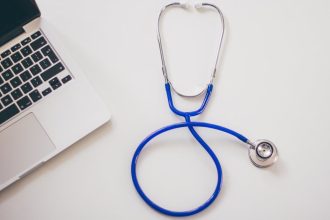Recovering from an injury, whether it’s the result of a car crash, workplace incident, sports mishap, or slip and fall, can be a slow, frustrating process. But healing doesn’t have to be passive. With the right approach, you can recover faster and build a stronger, healthier body in the long run.
Effective recovery requires a mix of medical guidance, physical care, mental support, and proactive steps. Skipping important stages or rushing the process may increase your risk of complications or long-term limitations. If you’ve recently been injured and want to bounce back stronger, these six steps will guide you toward a full recovery and better health.
Get a Full Diagnosis and Professional Support
The first, and most important, step after any injury is to seek a comprehensive medical evaluation. Even if you feel fine, injuries like concussions, internal bruising, or ligament damage may not show symptoms right away. Prompt diagnosis ensures you get proper treatment early, which can significantly speed up your recovery timeline.
Alongside your healthcare provider, you might need to work with specialists such as physical therapists, orthopedic doctors, or neurologists, depending on the nature of your injury. In some cases, particularly if the injury was caused by someone else’s negligence, working with a personal injury law firm can help you protect your rights, navigate insurance claims, and potentially secure compensation for medical expenses and lost wages. These firms often coordinate with medical professionals to ensure all aspects of your recovery, legal and physical, are addressed.
Don’t downplay your pain or mobility issues. The more thorough your early intervention, the less likely you’ll experience complications down the line.
Follow Your Treatment Plan Without Cutting Corners
Once you’ve received a diagnosis, it’s critical to follow your treatment plan as outlined by your medical team. This includes taking prescribed medications, attending therapy sessions, limiting activity when advised, and completing recommended exercises at home.
Skipping sessions or resuming physical activity too soon can worsen the injury or delay healing. For example, not finishing a round of antibiotics for an infection may cause it to return, and ignoring physical therapy might result in stiffness, reduced range of motion, or chronic pain.
Healing happens in phases, don’t try to fast-forward the process. Sticking with your prescribed recovery plan, even when it’s inconvenient or uncomfortable, will lead to better long-term outcomes.
Prioritize Rest and Sleep
Your body does its most significant repair work while you sleep. During deep sleep stages, growth hormone is released, promoting tissue regeneration and muscle repair. For this reason, getting enough quality sleep every night is non-negotiable for optimal recovery.
Avoiding rest in an effort to “push through” pain can be counterproductive. If you’re feeling tired, sore, or mentally foggy, it’s a sign that your body needs time to recharge. Napping during the day, going to bed earlier, and limiting screen time before sleep can all help improve sleep quality and speed up healing.
Sleep hygiene matters too. Keep your room cool and dark, avoid caffeine in the afternoon, and follow a consistent bedtime routine. When you support your body’s natural rhythms, you give it the environment it needs to heal effectively.
Focus on Nutrient-Dense Foods
Nutrition is another pillar of recovery. Your body requires vitamins, minerals, protein, and healthy fats to rebuild tissue, reduce inflammation, and boost your immune system.
Focus on eating whole, unprocessed foods like leafy greens, berries, lean protein, and omega-3-rich sources such as salmon or flaxseeds. Vitamin C supports collagen production, which is important for skin and ligament repair. Zinc and magnesium play important roles in recovery, particularly for bone and muscle injuries.
Rebuild Strength Gradually and Mindfully
Once your healthcare provider clears you for activity, physical therapy or a structured fitness plan will help you rebuild strength, flexibility, and endurance. This phase is not about going back to your old routines immediately, it’s about starting slowly and reconditioning your body with intention.
Begin with low-impact exercises such as swimming, walking, or yoga. These can help you regain range of motion and promote circulation without putting too much stress on your healing body. Resistance bands, bodyweight exercises, and gentle stretches can aid in restoring function.
Support Your Mental Health During Recovery
Recovering from an injury doesn’t just impact your body, it takes a toll on your mental and emotional well-being. It’s common to experience frustration, anxiety, or even depression during this time, especially if you’ve had to take time off work or miss activities you enjoy.
Prioritizing mental health is just as important as physical healing. Talking to a therapist, joining a support group, or engaging in mindfulness practices like meditation or journaling can help reduce stress and keep you motivated during recovery.
Injury recovery can be a challenging journey, but it presents an opportunity to reconnect with your body, build new habits, and emerge stronger than before. By seeking professional care, committing to your treatment plan, and supporting your physical and mental health through every stage, you can accelerate healing and reduce the risk of long-term complications. With the right mindset and approach, your recovery doesn’t have to be a setback, it can be a powerful step toward better health and resilience.











